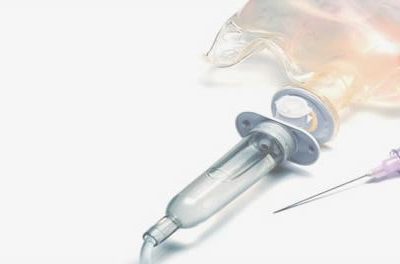In this guide, we summarise the most common routes used to administer drugs, the advantages and disadvantages of each drug route and examples of dosage forms that are used to deliver the active drug to the intended site of action in the body.
Table of Contents:
Routes of drug administration
1. Oral Route
2. Sublingual Route
3. Buccal Route
4. Intravenous Route
5. Intramuscular Route
6. Subcutaneous Route
7. Inhalation Route
8. Nasal Route
9. Rectal Route
10. Vaginal Route
11. Cutaneous Route
12. Otic Route
13. Ocular Route
14. Transdermal Route
15. Quiz
Oral Route
The drug is administered to or by way of the mouth.1 A drug given via this route is absorbed into the systemic circulation from the gastrointestinal tract. The oral route is the most frequently used route for drug administration.
Oral Dosage Forms
- Solid dosage forms e.g. tablets (immediate-release, enteric-coated, modified-release), capsules, granules, powders
- Liquid dosage forms e.g. syrups, elixirs, suspensions
Advantages of the Oral Route
- Cheap
- Generally safe route of drug administration
- Simple and convenient for the patient
- The patient can self-administer
- Non-invasive
Disadvantages of the Oral Route
- Drug absorption may vary. Examples of factors affecting drug absorption are gastrointestinal motility, gastric emptying rate and the presence of food in the gastrointestinal tract
- Subject to first-pass metabolism
- Oral route not possible in unconscious patients
- Unsuitable in patients who are vomiting
- Slow onset of action
- The drug may be destroyed by digestive enzymes and/or stomach acid
Sublingual Route
A dosage form designed for the sublingual (SL) route is administered under the tongue. The drug is absorbed from the blood vessels that lie under the tongue and enters the systemic circulation directly, thus avoiding first-pass metabolism.
Sublingual Dosage Forms
- Sublingual tablets e.g. glyceryl trinitrate SL tablet
- Sublingual films e.g. suboxone SL film
- Sublingual sprays e.g. glyceryl trinitrate SL spray
Advantages of the Sublingual Route
- Rapid drug absorption
- Quick onset of action
- Avoids first-pass metabolism
- The patient can self-administer
- Convenient for the patient
- Can be quickly terminated by spitting out the sublingual tablet if required
- This route can be used by people who have difficulty in swallowing tablets
Disadvantages of the Sublingual Route
- Most drugs are not available as sublingual formulations
- The taste of the sublingual dosage form may not be liked by the patient
- Placing the sublingual dosage form under the tongue until it dissolves may be considered inconvenient by some patients
- Irritation to the oral mucosa
Buccal Route
The buccal route is administered by placing the buccal dosage form between the gum and the inner cheek. The drug is rapidly absorbed from the buccal mucosa and enters the systemic circulation, thus avoiding first-pass metabolism. In addition, this route can also be used for a local effect (e.g. hydrocortisone muco-adhesive buccal tablet for the treatment of aphthous ulceration of the mouth).
Buccal Dosage Forms
- Buccal tablets e.g. prochlorperazine maleate
- Chewing gum e.g. nicotine gum
Advantages of the Buccal Route
- Rapid drug absorption
- Avoids first-pass metabolism
- Convenient for the patient
Disadvantages of the Buccal Route
- The taste of the buccal dosage form may not be liked by the patient
- Irritation to the oral mucosa
Intravenous Route
A drug administered by the intravenous (IV) route is given directly into a vein as direct injection or infusion.
Intravenous Dosage Forms
- Injection
- Emulsion injection
- Solution for injection
- Solution for infusion
Advantages of the Intravenous Route
- Immediate effect (suitable for emergencies)
- Can be given to unconscious patients
- Avoids first-pass metabolism
- Achieves predictable and precise control over drug plasma levels compared to other routes
Disadvantages of the Intravenous Route
- Possible anaphylaxis
- Risk of infection
- Inconvenient to the patient
- Painful
- Expensive compared to other routes
- Risk of phlebitis or extravasation
- Requires trained medical/nursing staff to administer
- Once injected, the drug cannot be recalled
- Labour intensive and time-consuming e.g. may require calculating the dose, looking up the diluents to be used, checking for IV drug compatibilities, preparation of IV drug and administering the injection
Intramuscular Route
The intramuscular (IM) route is given directly into the muscle (e.g. gluteus medius and deltoid).
Intramuscular Dosage Forms
- Solution for intramuscular injection
Advantages of the Intramuscular Route
- Immediate onset
- Depot or sustained release
- Avoids first-pass metabolism
- Easier to administer compared to the intravenous route
Disadvantages of the Intramuscular Route
- Expensive
- Requires trained medical/nursing staff
- Irritating drugs may be painful
- Slower onset than IV route
- Variable drug absorption dependent upon the muscle group used and the blood flow to the muscle
Subcutaneous Route
The subcutaneous (SC) route is injected into the subcutaneous tissue. It can be given as direct injection or infusion.
Advantages of the Subcutaneous Route
- Can be self-administered by the patient
- Some drugs have a long duration of action e.g. flupentixol
- Low risk of systemic infection
Disadvantages of the Subcutaneous Route
- Variable drug absorption dependent on blood flow
- Only a small volume of the drug can be administered
Pulmonary/Inhalation Route
The inhalation route is used for a local effect or systemic effect. The drug is inhaled through the mouth and delivered into the lungs.
Pulmonary Dosage Forms
- Metered-dose inhalers (MDIs)
- Dry powder inhalers
Advantages of Inhalation Route
- Rapid onset of action
- Systemic side effects minimised
- Reaches the site of action
Disadvantages of Inhalation Route
- Proper inhaler technique required for the drug to work maximally
- Only a small number of drugs can be given via this route
- May stimulate the cough reflex
Nasal Route
Administration of a drug directly into the nose.
Nasal Dosage Forms
- Nose spray
- Nose drops
Advantages of Nasal Route
- Can be self-administered by the patient
- Rapid onset of action
- Minimal side effects
Disadvantages of Nasal Route
- Some nasal drops or sprays may lead to an unpleasant taste in the mouth
Rectal Route
Administration into the rectum for a localised effect or a systemic effect.
Rectal Dosage Forms
- Suppositories
- Enemas
Advantages of Rectal Route
- The patient can self-administer
- Can be used for a local effect
- Can be used in patients unable to swallow, vomiting or unconscious
- Reduced first-pass metabolism
Disadvantages of Rectal Route
- Uncomfortable and messy to use
- Inconvenient for the patient
- Absorption can be slow and erratic
- Not well accepted by the patient
Vaginal Route
Administered into the vagina.1
Vaginal Dosage Forms
- Vaginal pessaries
- Vaginal creams
- Vaginal rings
Advantages of Vaginal Route
- The patient can self-administer
- Can be used for a local effect
- Avoids first-pass metabolism
Disadvantages of Vaginal Route
- Uncomfortable and messy to use
- Patient compliance
- Local irritation
- Inconvenient to the patient
- Not well accepted by the patient
Cutaneous Route
Administration to the skin.1
Cutaneous Dosage Forms
- Dermatological preparations e.g. ointments, creams, liquids, powders, solutions, shampoos
Advantages of Cutaneous Route
- The patient can self-administer
- Can be used for a localised effect
- Systemic side effects/drug interactions avoided or reduced
Disadvantages of Cutaneous Route
- Some preparations may be messy or difficult to apply
- Some dermatological preparations are time-consuming to apply
- Adverse drug reactions to excipients contained in the dosage form
Otic/Ear Route
Administration to or by way of the ear.1
Otic Dosage Forms
- Ear drops
Advantages of the Otic Route
- Produce a local effect
Disadvantages of the Otic Route
- May be difficult for some patients to administer themselves
- This route may be considered time-consuming by the patient as they need to remain on their side/tilt the ear for a few minutes after instillation of ear drops
Ocular/Eye Route
Administration of drug into the eye.
Ocular Dosage Forms
- Eye ointment
- Eye drops
Advantages of the Ocular Route
- Convenient for the patient
- Systemic side effects reduced
Disadvantages of the Ocular Route
- May cause temporary blurring of vision upon instillation of eye drops/ointment
- Barriers to administration e.g. poor manual dexterity, poor vision
- Not all ocular dosage forms can be used with contact lenses
Transdermal Route
Absorption of the drug through the skin and into the systemic circulation.
Transdermal Dosage Forms
- Transdermal patches
- Transdermal gels
Advantages of the Transdermal Route
- Convenient for the patient
- Long duration of drug action
- Usually requires less frequent application e.g. 24 hours/72hours
- The patient can self-administer
- Avoids first-pass metabolism
- Steady plasma concentration
- Slow absorption
Disadvantages of the Transdermal Route
- Can be expensive
- Local irritation
Routes of Drug Administration Quiz
You can test what you have learned with this quiz. There are ten questions to attempt. On completion of all the questions, check your answers at the end.
Reference:
1. Food and Drug Administration. FDA Center for Drug Evaluation and Research Data Standards Manual: Route of Administration. Available at: https://www.fda.gov/drugs/data-standards-manual-monographs/route-administration [Accessed on 01/10/2020].



